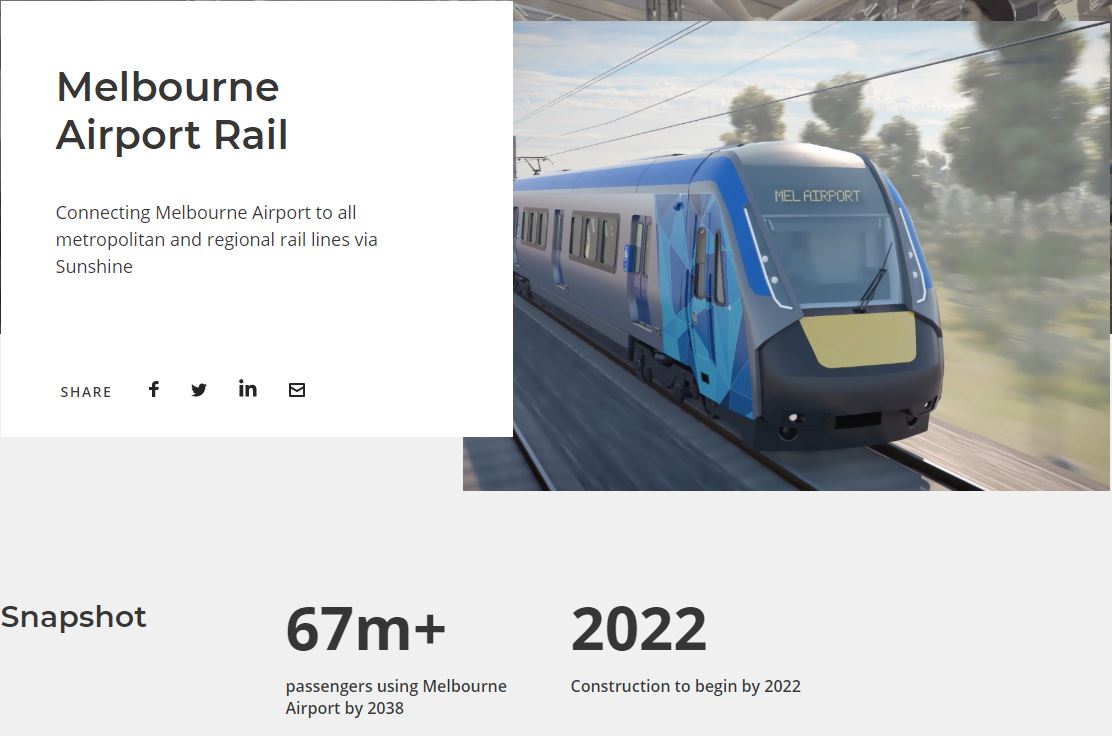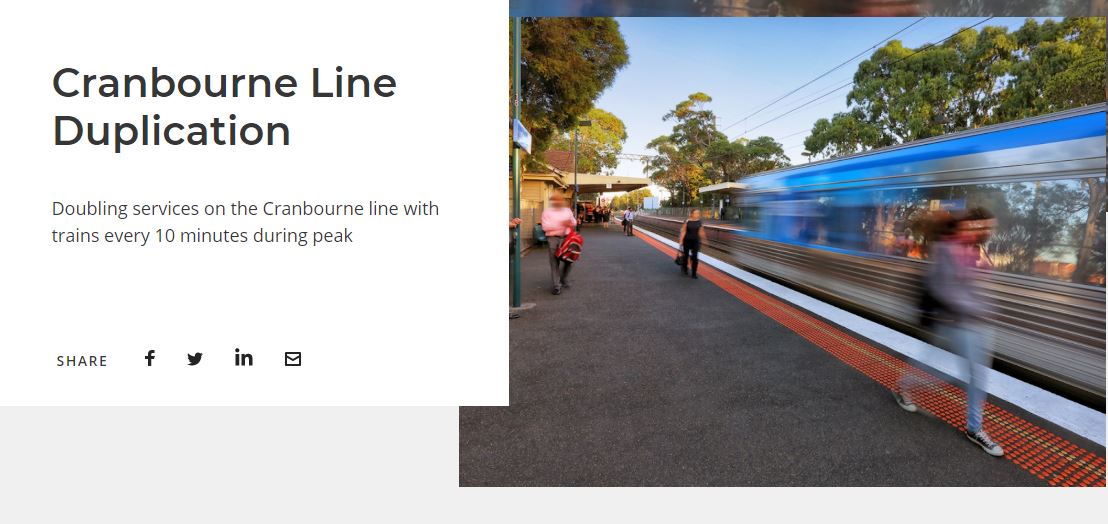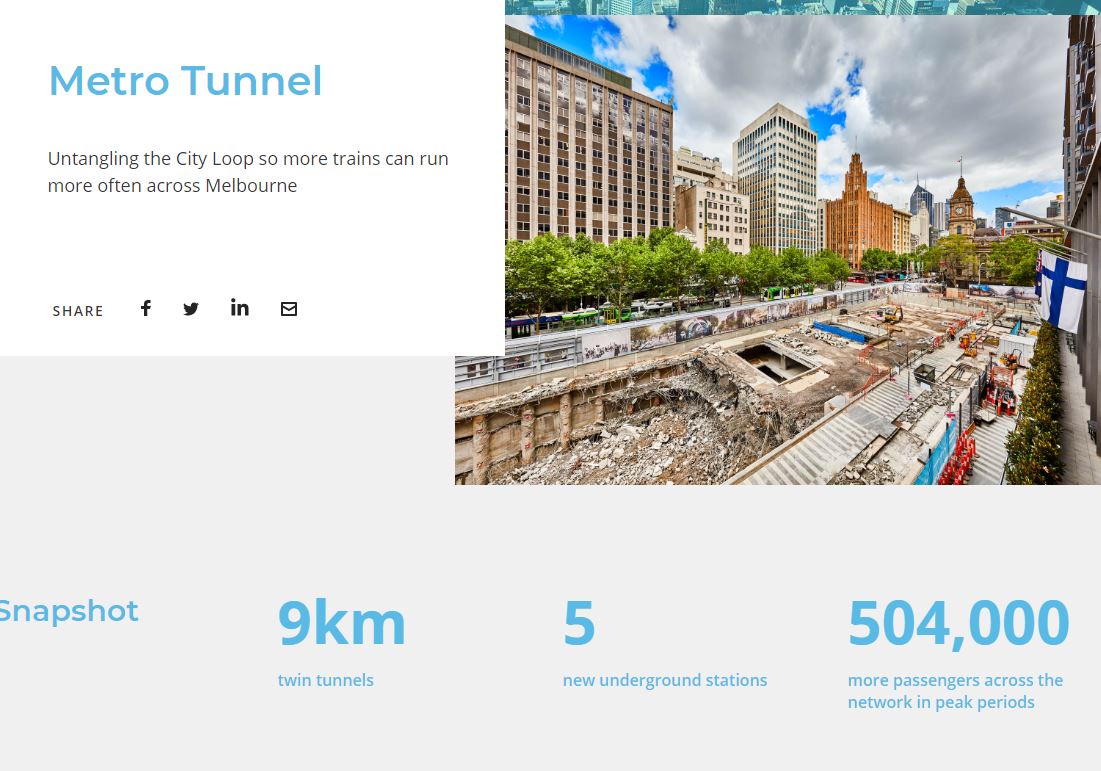Victorian Melbourne Infrastructure Update
As the pace of the delivery of large projects increases in Victoria, more than one hundred billion dollars worth of new roads, rail lines, hospitals, skyscrapers, jails, wind farms, and other forms of infrastructure are either now being constructed or are in the planning stages.
The value of what is being constructed in Victoria, as well as what is planned to be developed, has reached a new all-time high of $106.2 billion because to an increase in investment in new projects by both governments and corporations.
The list of projects in development or under consideration in Victoria increased by $18.5 billion during the three months leading up to June, making it the state with the fastest-growing infrastructure boom relative to the other states.
In order to develop greater capacity on existing networks and fund enhancements across the road, rail, and port, the government of Victoria is investing 57 billion Australian dollars in significant infrastructure and smart technology projects that are currently under construction.
As our population continues to increase at a rapid rate and the economy continues to shift, having transit that is both modern and reliable will be essential to preserving our wealth and our world-famous liveability.
Melbourne Airport Rail Link
With the official signing of the project by the Victorian and Federal governments on March 14, 2019, Victorians will finally be able to make use of the long-awaited Melbourne Airport Rail Link. This project has received a $5 billion contribution from both governments.
The missing link will connect communities and give Victorians options. It will deliver a new super-hub at Sunshine, reduce congestion on the freeway leading to the airport, and unlock capacity for the expanding population in Melbourne's north-western suburbs.
The business case will be delivered by the year 2020, and it will evaluate the various station and procurement choices, as well as prospects for value capture and creation, and economic analysis.
In addition to this, a reference committee will be established in order to consult with members of the community, the industry, and the local government.
The governments of Victoria and the United States have each pledged up to $5 billion to fund the construction of the missing link. It is projected that the overall cost of the project will be somewhere in the range of $8 billion to $13 billion.
It is anticipated that construction will begin in 2022 and continue for up to nine years. The toll road, would cost an estimated 1.75 billion dollars according to the Turnbull government's projections.
Cranbourne Line Duplication
Increasing the frequency of train service on the Cranbourne line to every ten minutes during peak hours
As part of the project, there would be a duplication of the eight kilometres of single track that ran between Dandenong and Cranbourne.
This would get rid of the bottlenecks that create delays, making it possible to treble the number of train services during peak periods and deliver trains every 10 minutes throughout the whole Cranbourne route.
Additionally, tracks would be upgraded in the vicinity of Caulfield station, which is where the Frankston line diverges from the Cranbourne-Pakenham line, as well as tracks in the vicinity of Dandenong station, which is where the Cranbourne and Pakenham lines break off from one another.
Because of this, trains would be able to run through these stops more rapidly, resulting in fewer delays and people getting home sooner.
The initiative would result in the creation of more than one thousand employees. The next year would see the beginning of detailed planning and procurement, with construction beginning in 2021 and continuing until 2023.
Metro Tunnel
In order for extra trains to move around Melbourne at higher frequencies, the tangles that exist within the City Loop need to be ironed out.
The City Loop, which was built in the 1970s, was Melbourne's previous major rail project. Since then, the Metro Tunnel has been the city's most significant rail endeavour. In order to bring the project to a successful conclusion, twin train tunnels and five underground stations will need to be built stretching all the way from North Melbourne to the Domain precinct, which is situated to the south of the Central Business District.
New subterranean walkways will connect Town Hall Station through to Flinders Street Station and State Library Station to Melbourne Central Station, allowing commuters to easily connect to City Loop and Metro Tunnel services. These walkways will also connect Town Hall Station to State Library Station. The Town Hall Station, the Flinders Street Station, and the State Library Station will all be connected to the Melbourne Central Station by means of these walkways.
After construction on the Metro Tunnel is finished, it will be possible to travel to the University of Melbourne and other medical facilities, such as the Royal Melbourne Hospital, the Royal Women's Hospital, and the Victorian Comprehensive Cancer Centre.
It will be possible to run more trains into and out of the suburbs as a result of this project because it will free up space in the City Loop by routeing three of the busiest train lines (the Cranbourne/Pakenham and Sunbury lines) through a new tunnel that will be constructed underneath the city. This will make it possible to run more trains into and out of the suburbs. The results of this initiative will have a significant positive impact.
The introduction of brand-new, cutting-edge technology will make it possible for trains to depart every two to three minutes. This will signal the beginning of the transition towards a "turn up and go" rail system in Melbourne, which will allow trains to leave every two to three minutes.
Bringing Hoddle Street up to date
Facilitating the safer and more efficient movement of vehicles, bicycles, and pedestrians.
The project is known as "Streamlining Hoddle Street" will result in an enhanced travelling experience for the 330,000 people who use this busy road each day, both to go along and across it.
In order to improve the flow of traffic along Hoddle Street and Punt Road, improvements are going to be made to four significant intersections.
In order to enhance both access and safety for cyclists and pedestrians along Swan Street, new pedestrian pathways and crossings, in addition to dedicated cycle lanes, will be constructed. In addition, there will be dedicated lanes for buses and trams, as well as priority for buses at intersections with traffic signals.
At the beginning of 2018, construction began on the project to streamline Hoddle Street, and it is anticipated that the development would be finished by the end of 2019.
Suburban Rail Loop
A rail connection that runs through the centre of Melbourne's suburbs
The Suburban Rail Loop is a recently constructed underground rail link that connects the middle suburbs of Melbourne.
It will connect key railway lines and feature new stations, stretching from the Frankston line to the Werribee line and passing through Melbourne Airport in the process.
The Suburban Rail Loop will link all Victorians to key health, education, and employment centres, as well as connect Melbourne's middle suburbs to priority growth regions.
Suburban Roads Upgrade
In the outer west, north, and south-eastern suburbs of Melbourne, priority roads are undergoing an upgrade.
The upgrade of 20 priority roads around Melbourne's outer west, north, and south-eastern suburbs will be the result of an investment of four billion dollars called the Suburban Roads Upgrade.
Western Roads Upgrade
The projects that will alter eight priority highways in Melbourne's western suburbs and cost a total of $1.8 billion are currently under construction.
More than 260 kilometres of road between Footscray and Werribee are scheduled to get repaired and enhancements thanks to funding that will be allocated over the next 20 years.
Improvements Made to South Eastern Roads
In the south-east, preparations are currently being made to plan for the addition of additional lanes to:
Between the Princes Freeway and Manks Road in Pakenham South, the Healesville-Koo Wee Rup Road intersection
Between Oliphant Way and Dandenong-Frankston Road is where you'll find Lathams Road in Seaford.
Between Heatherton Road and James Cook Drive in Endeavour Hills is where you'll find Hallam North Road.
Between Thompsons Road and the South Gippsland Highway in Cranbourne is where you'll find the Narre Warren-Cranbourne Road.
A new bridge will be built over the Cranbourne train line on Pound Road West in Dandenong South, which is located between Abbotts Road and the South Gippsland Highway.
In Langwarrin South, the roundabout at the intersection of Golf Links Road, Grant Road, Warrandyte Road, and Baxter-Tooradin Road will be rebuilt, and there will be enhancements made to the road surface and safety along Golf Links and Grant Roads.
Flinders Street Station is being brought back to life as a Melbourne landmark
In order to modernize Flinders Street Station and make it more user-friendly, the state government of Victoria has committed one hundred million dollars to the project.
Midway through the month of February in 2015, the Premier of Victoria, Daniel Andrews, and the Minister for Public Transport, Jacinta Allan, made the announcement that funds would be made available to undertake urgent refurbishment works and upgrade station platforms, entrances, toilets, and information displays.
Without immediate repairs to the station's historic components, those components will soon become hazardous, useless, and beyond repair.
With an expenditure of one hundred million dollars from the Victorian government, essential repairs will be made to the deteriorating facade of the Administration Building as well as the clock tower, and the building will be made watertight.
The works would also be beneficial to tourists and commuters who use the station on a daily basis. The platforms and entrances of the station will be improved to reduce the amount of congestion that occurs during peak travel periods and enable passengers to move through the station more quickly.
Fixes will be made to the restrooms, dirty and underutilized areas will be spruced up and given adequate lighting, and new information displays will be set up.
The undertaking was started in 2015, and its completion is anticipated to take a total of four years. It will be beneficial for the neighbouring commercial precinct, the economy, and for maintaining Melbourne's status as a popular tourist destination.
In addition, a business case is currently being produced that will allow the Victorian Government to investigate options to rehabilitate the ancient ballroom and other abandoned areas of the property. This is being done with the intention of attracting new tenants and establishing an exciting commercial precinct.
The following projects involving the heritage will be carried out:
- rebuilding and repairing the structure's exterior and roof;
- ensuring that the building has a solid foundation;
- preventing water from entering the building;
- preserving and maintaining the integrity of the building structure;
- repairing the historic clock tower and other historic features;
- painting the structure in accordance with the specifications for historic buildings.
The following improvements are being made to the station in order to better serve passengers:
- enhancing access to the station area and between platforms, particularly finding solutions to the growing pedestrian congestion challenges at the west end of the station;
- putting in place my equipment of the next generation as well as more myki readers;
- installing new passenger information screens and modernizing the lighting;
- redeveloping the restroom facilities;
- improving the customer service at the ticket offices located at the entrances on Flinders Street and Elizabeth Street
- erecting a massive timetable board with Federation Square and the tram interchange as its primary focal points.
Creating a New Cultural Landscape in Melbourne's Arts Precinct
The Southbank arts area in Melbourne, Australia, is home to one of the biggest concentrations of artistic, cultural, and creative organizations found anywhere in the world. It also hosts up to three thousand events and exhibitions every single year.
It is home to the art gallery with the most visitors and the performing arts centre with the most activity in the country. It is also home to the best art education and training institutions, as well as art galleries, theatres, music venues, studios, and creative co-working spaces, among other things.
The transformation of the Melbourne Arts Precinct will result in the establishment of significant new tourist destinations. These destinations will include the NGV Contemporary, which is slated to become the largest gallery in Australia devoted to contemporary art and design; a new Australian Performing Arts Gallery; and an expanded Australian Music Vault.
It will be the first major refurbishment to the Theatres Building at Arts Centre Melbourne in 37 years, and it will establish a new creative hub with spaces and facilities for Victoria's small to medium and independent arts sector. The Theatres Building is located underneath the distinctive spire of our city.
18,000 square meters of brand-new and reimagined open public space will be added to the precinct in addition to the precinct's already existing facilities. This space will connect the renowned cultural institutions on St. Kilda Road to a world of new experiences that lie beyond them.
No matter if you have a ticket to a show or not, the Melbourne Arts Precinct will be a place where you can go at any time of the day or night to have a fantastic time, take in the ambience, and enjoy a cultural experience that is uniquely Melbourne.
Work has already begun on the initial stages of this city-shaping initiative, which will cost a total of $208 million. These stages include the purchase and allocation of crucial sites for future development. It is anticipated that all of the planning and design work will be finished by the year 2020.
Developing a district that is renowned worldwide for its sporting and cultural events
Because of the $972 million change that is being made to this world-class athletic complex at Melbourne Park, the Australian Open will continue to be played there until the year 2036.
The restoration of Melbourne Park intends to establish Melbourne and Olympic Parks as an unequalled sports and events area in addition to catering to the rising demand for tickets to the Australian Open as part of its overall mission.
The reconstruction lays a heavy emphasis on the comfort of the customers by providing more open space and shade, increasing the sitting capacity, improving connections to public transportation and the city, and making it easier to navigate into and around the precinct.
In addition to the Australian Open, Melbourne and Olympic Park are recognized as one of the largest sports and entertainment centres in the world. Together, they play host to around 600 events each year and draw in excess of two million visitors.
Development The management of the reconstruction is being handled by Victoria in collaboration with Sport and Recreation Victoria, Melbourne and Olympic Parks, and Tennis Australia.







